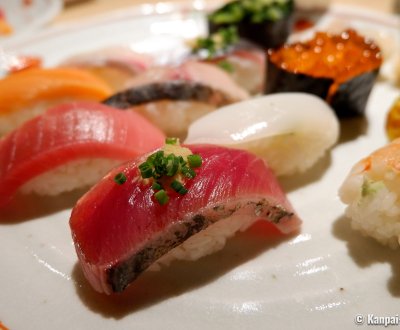Sushi
🍣 Japan’s Beautiful Raw Fish and Rice Bites
Sushi is the delicious association of vinegared Japanese rice with a usually raw fish topping. Considered a pillar of Japanese gastronomy in the world, sushi is a refined dish that comes at a certain price and therefore is eaten for special occasions, such as private or public celebrations.
While sushi 🍣 is the symbol of Japanese cuisine in the world, for the Japanese, it remains an exceptional delicacy and a celebratory dish. However, it is very easy to find throughout the archipelago, whether in specialized restaurants, konbinis or supermarkets.
The Japanese term 寿司or 鮨 sushi is the combination of 2 words: su and meshi that respectively mean "vinegar" and"cooked rice" (meshi also means "meal"). Contrary to a common belief, what makes a good sushi is first and foremost the preparation of the vinegared rice, called shari (舎利 or シャリorしゃり). The topping, called sushi neta (寿司ネタ), literally "sushi material", is in fact an addition to the rice. In Japanese, the word "sushi" is indeed a generic term used as a suffix (-zushi) to name the main types of traditional sushi in Japan.
The various original sushi types
Nigiri-zushi (握り寿司)
A nigiri in Japan refers to the classically shaped sushi, as it is known overseas, that is to say a big chunk of fresh raw fish placed on top of a small vinegared rice ball.
The sushi chefs quickly shape by hand the nigiri-zushi which is usually served already seasoned, with especially:
- A tiny bit of wasabi placed between the rice and the topping during the sushi making;
- A layer of shoyu soy sauce brushed on the fish; or,
- Fresh grated ginger and / or fresh onion slices placed on the top of the sushi.
This very simple recipe requires ingredients of an excellent quality to guarantee food safety, as well as skills to find the perfect balance between the topping, the rice and the seasoning. Sushi can be eaten with fingers or with chopsticks.
The nigiri-zushi in the shape we eat them today are however recent in the history of Japanese gastronomy. Their origin is said to date back to the 1rst half of the 19th century, when Hanaya Yohei (1799 – 1858), a yatai street vendor in the feudal capital Edo (future Tokyo), invented this new preparation that was quick, convenient, affordable and always fresh. The success of this delicious bite size food is now history.
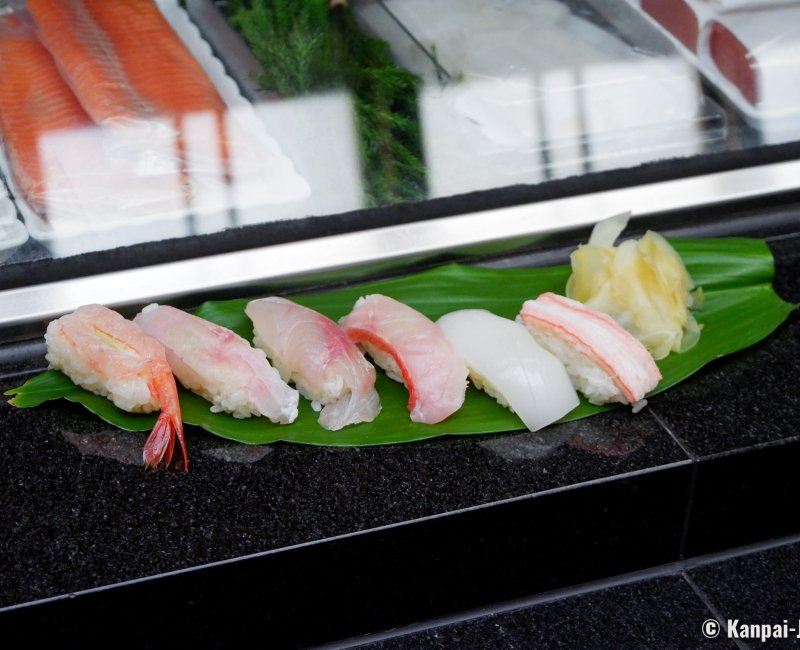
Maki-zushi (巻き寿司)
Also a worldwide hit, the maki is a sushi rolled into a thin cylinder with a bamboo mat and served in bite size slices (there are usually 6 slices from one roll).
A sheet of nori seaweed holds together the rice and the filling, that is made with only one ingredient at the center: usually red tuna, cucumber, marinated radish or even natto. Thicker rolls are called futomaki-zushi (太巻き寿司) and include several ingredients for fillings. They are usually eaten on holidays in families.
A widespread alternative version is the gunkan-maki (軍艦巻) that was named in reference to its more massive and elongated shape that reminds of a battleship. The sturdy rice base is belted in a large nori seaweed sheet that also helps containing softer or more fragile ingredients such as urchin, fish eggs or negitoro minced raw tuna.
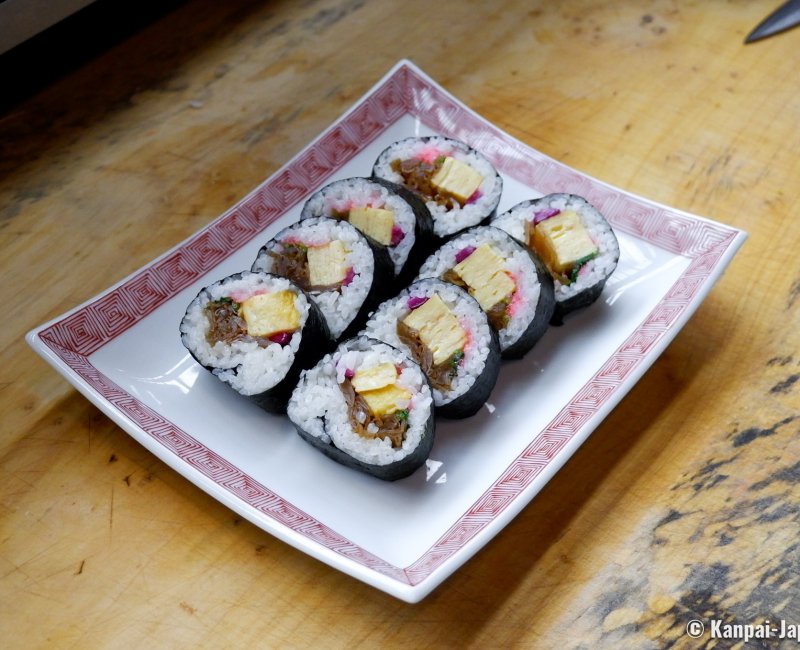
Temaki-zushi (手巻き寿司)
The temaki-zushi is a hand-rolled shari rice cone that one holds like an ice cream, and just bites into it. Like the maki, it is rolled in a nori seaweed, whose crispiness is better enjoyed when eating the temaki as soon as possible after it was made.
Chirashi-zushi (ちらし寿司)
The chirashi-zushi is a bowl of sushi rice on which are laid various toppings such as:
- Slices of various raw fish,
- Seafood and crustaceans,
- Other ingredients such as omelet and vegetables.
It is often confused with the fish donburi, and one of the main differences is the seasoning of the rice: rice in a chirashi is vinegared, whereas it is plain in a kaisendon.
A hearty and seasonal dish to share between several people, the chirashi is often served for family celebrations such as Hina Matsuri 🎎 in the beginning of spring 🌸.
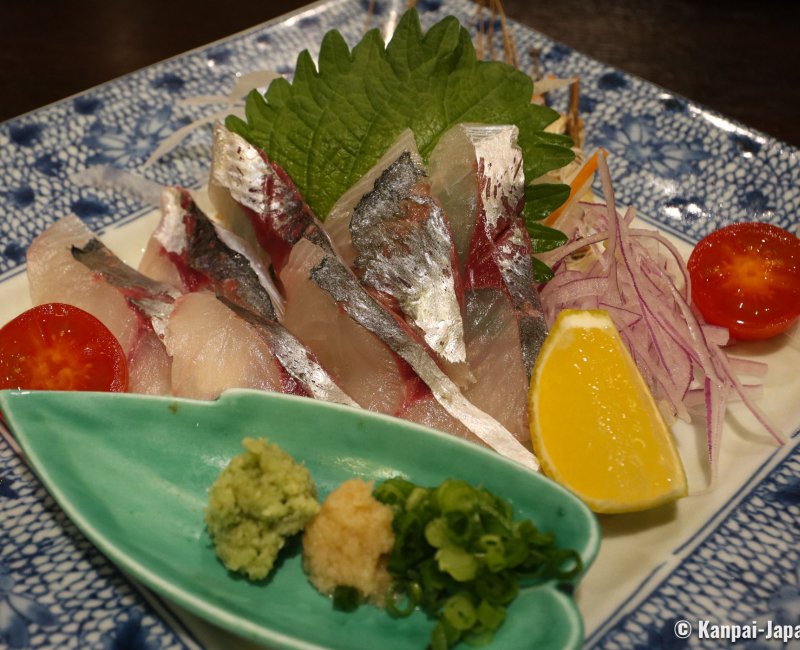
Inari-zushi (稲荷寿司)
The only type of sushi without a topping, the inari-zushi is a simple vinegared rice ball placed in a fried tofu pouch. A cheap and hearty dish, it is easily purchasable to take out and ready to eat as a quick snack.
Oshi-zushi (押し寿司)
Oshi-zushi means "pressed sushi" and is a sushi version designed to fit into a bento 🍱 box. Of a square or rectangular shape, the rice is pressed with its topping (usually salmon or mackerel) and wrapped in a vegetal leaf, a bamboo leaf for example, before being placed in the lunch-box.
This kind of sushi is often used for ekibento, the lunch box you can buy at the station, especially before boarding a Shinkansen 🚅 bullet train.
Sashimi (刺身)
The sashimi is a serving of raw fish slices. It is not really a sushi per se as it does not include rice, but it is introduced here as it is common to serve a white rice bowl on the side of a sashimi plate in Japan. Moreover, the fish eaten as sashimi are the same than the ones served as sushi.
The raw fish slices are also a staple of the traditional kaiseki meal that is usually served at dinner in Japanese ryokan inns.
Western-style customizations
The Japanese sushi has spread throughout the world into an affluent population interested in fast but healthy food, and attracted by the sushis’ appetizing colors. Over time, new sushi types have been created to better fit to Westerners’ taste.
The famous California Rolls were for example invented in the United States and are now also very popular in Europe. In this upside down version, the rice is outside and the nori seaweed inside with the filling, and is called in Japanese ura-makizushi (裏巻き寿司) that is to say the "upside down maki". But you won’t find it easily in the archipelago. As a matter of fact, the association of avocado with salmon or red tuna is akin to heresy for true sushi amateurs, as well as the mayonnaise seasoning.
In the same idea, other "exotic" rolls only exist outside Japan, such as:
- The Fresh Rolls, inspired from Chinese cuisine, where the dried seaweed is replaced by a thin and transparent rice sheet, and includes plants with strong flavors such as mint or cilantro; and,
- The Salmon Rolls, with rice wrapped in a slice of raw salmon.
Be that as it may, in Japan, you’ll find meat nigiri-zushi called niku nigiri (肉握): in the American burger version (ハンバーグ寿司 hanbagu sushi) to try at the cheapest restaurants, or with traditional tender wagyu beef at the most upscale places.
Lastly, Japanese tourists visiting Paris can discover an incredible specialty only served in Asian restaurants in France, with menus combining sushi and yakitori meat skewers!
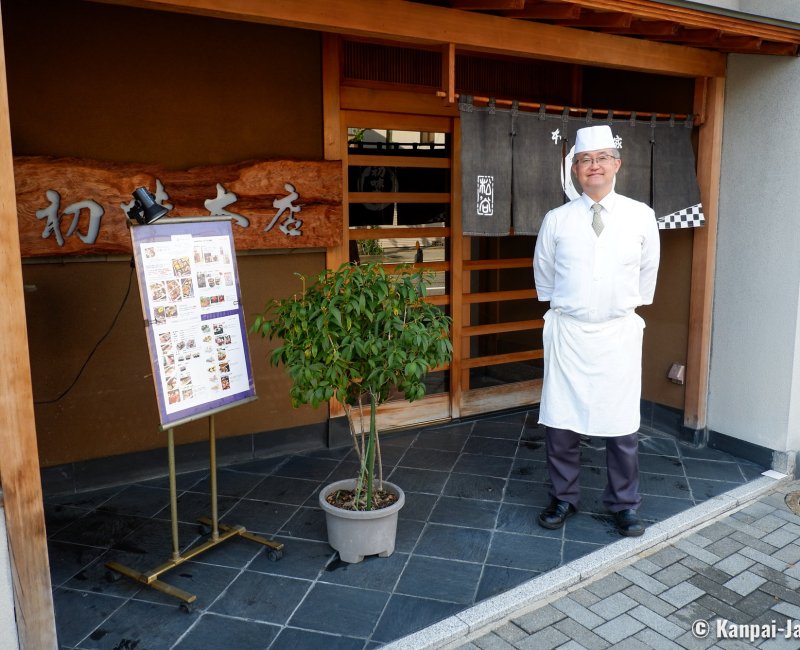
Where to eat sushi in Japan?
Even if they are not an every day dish for the Japanese, such as ramen 🍜 noodles or curry as it would be too expensive, there are many places to fill a stomach with sushi in Japan. Even going in the most upscale Japanese restaurant in the world doesn’t compare to eating delicious sushi in Japan.
There are 3 types of restaurants:
- The classical sushi-ya (寿司屋) with a traditional front-store decorated with noren curtains. The chef is working behind the counter to prepare the sushi ordered à la carte or from a set-menu;
- The more modern kaiten-zushi (回転寿司) with a conveyor belt counter from which one takes the plates that are ready made, and according to one’s taste. At the end of the meal, the bill amounts to the number of plates used and their value per unit, with prices starting from ¥100 to 150 (~US$0.63 to ~US$0.95) VAT not included. The brands Sushiro and Hamazushi are among the most popular and affordable Japanese kaiten-zushi chains; and,
- The upscale omakase (お任せ) service for which one relies completely on the sushi chef to select the fish and the sushi types for the meal. This luxurious experience requires a reservation beforehand, and sometimes a long time in advance for the most popular places. Allow about at least ¥1,000 (~US$6.34) for each sushi served.
At the sushi-ya and the kaiten-zushi, green tea is usually offered for free, and comes as a powder to mix in hot water. Other drinks such as beer 🍺 or nihonshu are naturally charged. A warm oshibori towel is also provided at the beginning of the meal to wash hands before eating.
If you prefer take out, konbini, supermarkets and department stores basements' delicatessen shops provide interesting fresh sushi sets of the day. The prices vary according to the number of sushi and the types of fish. They are discounted at the end of the day, so you can buy more affordable sushi, however they usually sell very quickly. Restaurants also have take away menus for special holiday periods.
We also recommend going in the surroundings of fish markets as there are many local and affordable restaurants serving freshly caught fish and seafood.
Guide of the most widespread sushi fishes
The Japanese are used to eat from a large choice of fish, shellfish and other seafood in sushi and sashimi. They enjoy variations between the different flesh colors and textures, from firm to soft, melting or even crispy textures, that give a comprehensive taste experience through one meal. The taste has to get from the lightest to the strongest and ginger is used to clean the palate between 2 strong flavored sushi.
Variety also lies in the preparation of the toppings, the fish slices being:
- Mostly eaten raw (namai);
- Often already seasoned with wasabi, ginger or onion;
- Sometimes half-cooked in the tataki fashion, like bonito for example, or thoroughly cooked such as eel; or,
- Served with or without skin, according to its visual interest or taste value.
The fishing season is also an important factor when naming the fish appearing on the menu. Some species are indeed named shusseuo (出世魚) as their names change according to their life circle and the growth stage their reached when they are caught.
For example, the Japanese sea bass, also known as suzuki, can be called the following:
- Seigo, when it is a juvenile,
- Then fukko, seigo, and suzuki, and lastly,
- Otaro when it reached its definitive adult size.
Japan has an infinite array of sushi, with shapes, toppings and seasons that are far from the Western’s knowledge grasp, and too often reduced to a simple choice between tuna and salmon (a fish that was primarily consumed Scandinavia).
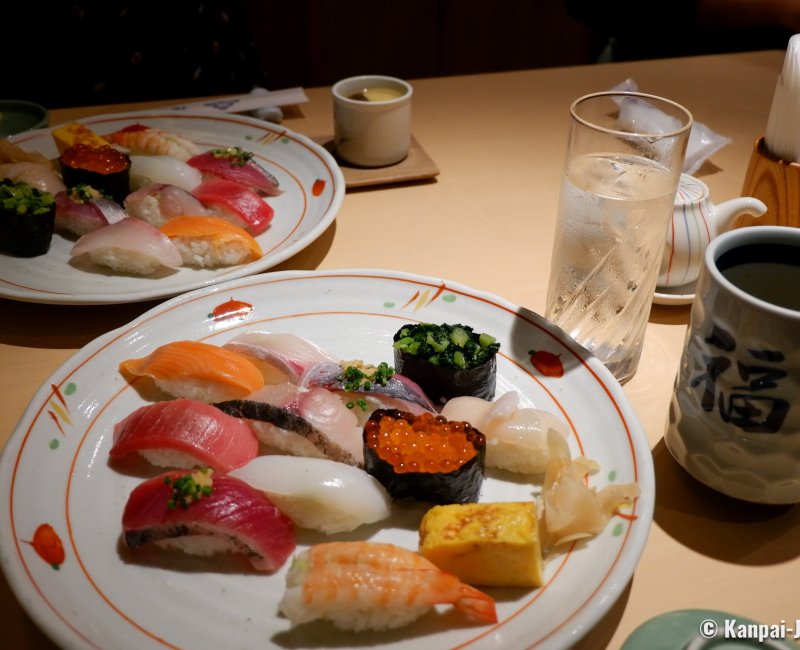
We compiled a non-exhaustive list of fish and other ingredients that are most commonly served at sushi restaurants in Japan:

